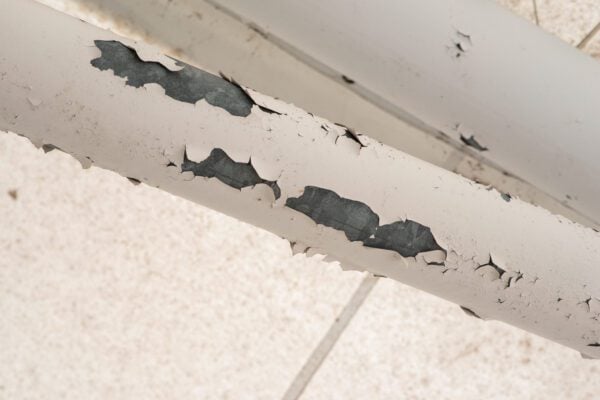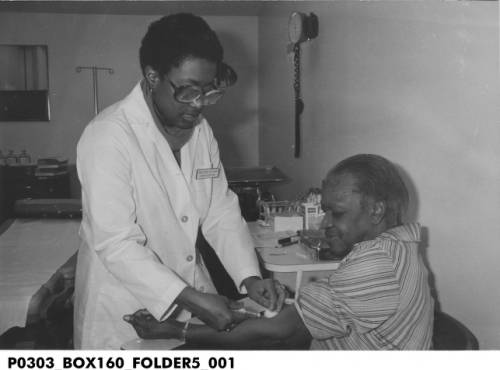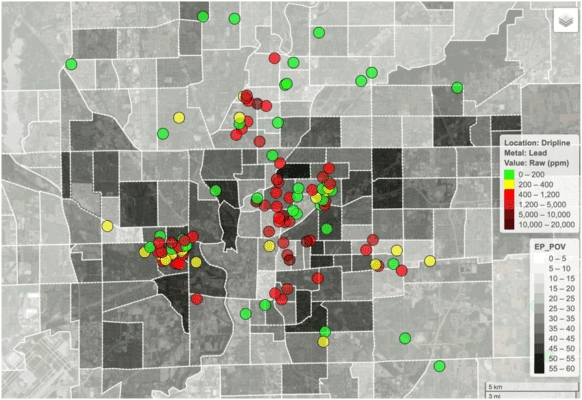Heart disease remains one of the leading causes of death in Marion County, and new findings suggest that chronic exposure to lead may be a contributing factor, particularly in neighborhoods with a long history of industrial contamination.
The Marion County Public Health Department (MCPHD) recently completed a Health Impact Assessment (HIA) for the Martindale Brightwood area, covering ZIP codes 46202, 46205 and 46218. The assessment focused on the relationship between environmental factors and health outcomes, including cardiovascular disease, hypertension and kidney disease.
The study found that residents in Martindale Brightwood consistently experience higher rates of hospitalizations and deaths linked to heart disease and hypertension compared to Marion County overall. According to the HIA, these trends held steady across multiple time periods, with some recent increases in hospitalizations for heart disease between 2017 and 2021.

“Martindale Brightwood has higher rates of disease burden than Marion County for these conditions,” the report stated. “Hospitalization and death rates for heart disease and hypertension were elevated across all three five-year review periods.”
While the assessment stops short of establishing a direct causal link between lead exposure and specific health outcomes for individual residents, national research points to a strong connection. According to a study published by the American Heart Association (AHA), even low levels of exposure to toxic metals like lead, cadmium, and arsenic can increase the risk of cardiovascular problems.
“Exposure to these metals is associated with oxidative stress and inflammation, which can contribute to cardiovascular disease development,” the AHA said in a statement. “People with chronic exposure to lead, cadmium or arsenic were at higher risk for cardiovascular disease, particularly heart disease and stroke.”
A legacy of contamination
Lead exposure has been an ongoing concern in Martindale Brightwood for decades. The neighborhood was home to the American Lead site, a former industrial facility that left widespread soil contamination. In the early 2000s, the U.S. Environmental Protection Agency (EPA) designated the site as a Superfund site, a designation reserved for the nation’s most hazardous waste locations.

The EPA’s Superfund program is designed to identify and clean up contaminated areas that pose significant risks to public health and the environment. In Martindale Brightwood, remediation efforts have been underway for years, but the long-term effects of contamination remain a concern for families living nearby.
Many homes were built before 1978, when lead-based paint was commonly used. As paint deteriorates over time, it can create contaminated dust and chips, increasing exposure risks, especially for children. According to the Centers for Disease Control and Prevention (CDC), lead exposure can occur through contaminated soil, drinking water and air, and “no level of lead exposure is considered completely safe, especially for children.”
Screening gaps raise concerns
According to data from the Indiana Department of Health, in 2024, only 31% of children under the age of six in Marion County were screened for lead exposure. Screening rates in the three ZIP codes included in the assessment were slightly lower, ranging from 27% to 36%.
These gaps in testing mean that many cases of lead exposure may go undetected. According to a joint analysis conducted by MCPHD and the IU Polis Center, higher blood lead levels were recorded among children in the Indy East Promise Neighborhood, which includes Martindale Brightwood. Health officials warn that childhood exposure can lead to lasting developmental and behavioral challenges, including learning difficulties and reduced lifetime earnings.

Historically, high environmental exposure and lower screening rates have made early detection and intervention critical. Through the Marion County Lead Poisoning Prevention Program, MCPHD offers free lead risk assessments, home inspections and blood lead tests. Residents can call 317-221-2155 or visit missionunleaded.org for services.
Broader health and economic impacts
Lead’s health effects extend beyond neurological development and childhood exposure. National research now shows that chronic exposure increases the risk of heart disease, heart attacks and strokes. According to the American Heart Association, even small amounts of lead over time can contribute to cardiovascular problems.
“In addition to long-known risks, such as developmental delays and cognitive issues in children, chronic lead exposure increases the risk of cardiovascular diseases, including stroke and heart attack,” said Erik D. Olson, senior strategic director for health at the Natural Resources Defense Council (NRDC). “Addressing these risks could save nearly $1 trillion in health and societal costs.”

The NRDC report on lead pipe replacement highlights the strong return on investment in clean water infrastructure. According to the organization, eliminating lead service lines nationwide could prevent significant healthcare costs while improving overall productivity and quality of life.
Local trends reflect national concerns
The Martindale Brightwood HIA examined 15 years of hospital discharge and vital records data, comparing local trends to county-wide numbers. According to MCPHD, age-adjusted rates were used to compare areas with different population demographics accurately.
Between 2007 and 2021, hospitalization rates for heart disease in Martindale Brightwood were consistently higher than in Marion County. While both areas increased, Martindale Brightwood’s rates were elevated across all three five-year periods reviewed. According to MCPHD, death rates due to heart disease also remained higher in Martindale Brightwood but showed a slight decrease in recent years.

Similar trends were observed for hypertension, with local hospitalization and death rates outpacing county-wide figures throughout the same timeframe. MCPHD cautioned that while these numbers reflect a significant health disparity, many contributing factors exist. Poor diet, physical inactivity, diabetes, tobacco use and alcohol consumption all influence cardiovascular health, making it challenging to measure the exact role of lead exposure in each case.
Public health experts say that while lifestyle factors like exercise and diet remain critical, environmental hazards like lead cannot be ignored.
“Environmental exposure creates an underlying risk that is difficult for individuals to control,” the HIA report notes, emphasizing the need for a multi-faceted approach to prevention.
Resources for residents
Local and state agencies encourage residents to protect their families from lead exposure proactively. MCPHD’s Healthy Homes, Environmental Consumer Management and Senior Care Department provide lead risk assessments, testing and educational resources. The Indiana Department of Environmental Management and the Indianapolis Mayor’s Action Center also offer water testing, housing inspections and neighborhood services.
The CDC stresses that prevention is key. According to the agency, eliminating exposure before it occurs is the most effective way to reduce harm. This means testing homes for lead hazards, replacing old water lines and ensuring children receive blood lead screenings.

These efforts could have far-reaching effects for residents of Martindale Brightwood and the surrounding neighborhoods, potentially preventing developmental harm in children and reduce the long-term risk of heart disease and other chronic illnesses.
As Olson with the NRDC noted, “Taking action now to eliminate lead exposure can create healthier communities and save lives for generations to come.”
For more information about lead testing and prevention, visit missionunleaded.org or call 317-221-2155.
This reporting is made possible by a grant from the Indianapolis African-American Quality of Life Initiative, empowering our community with essential health insights. https://iaaqli.org/
Contact Health & Environmental Reporter Hanna Rauworth at 317-762-7854 or follow her on Instagram at @hanna.rauworth.
Hanna Rauworth is the Health & Environmental Reporter for the Indianapolis Recorder Newspaper, where she covers topics at the intersection of public health, environmental issues, and community impact. With a commitment to storytelling that informs and empowers, she strives to highlight the challenges and solutions shaping the well-being of Indianapolis residents.





